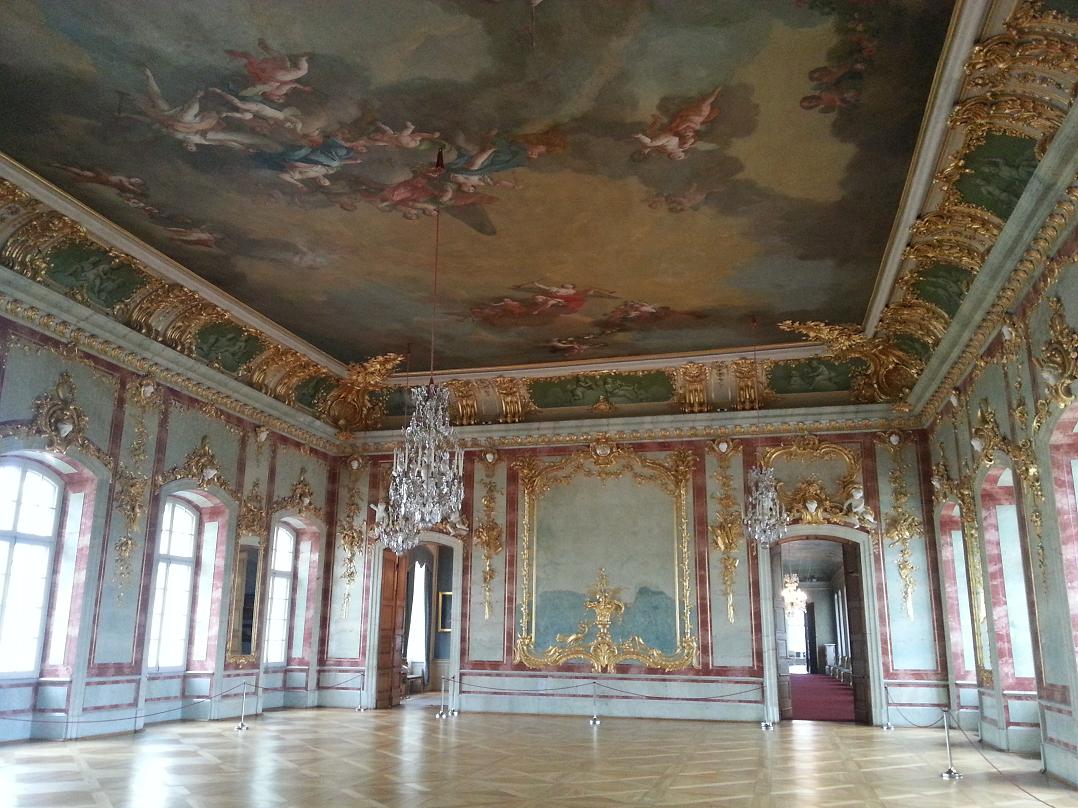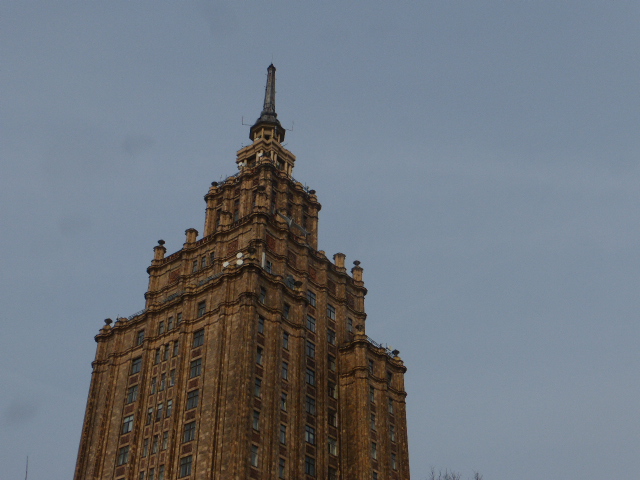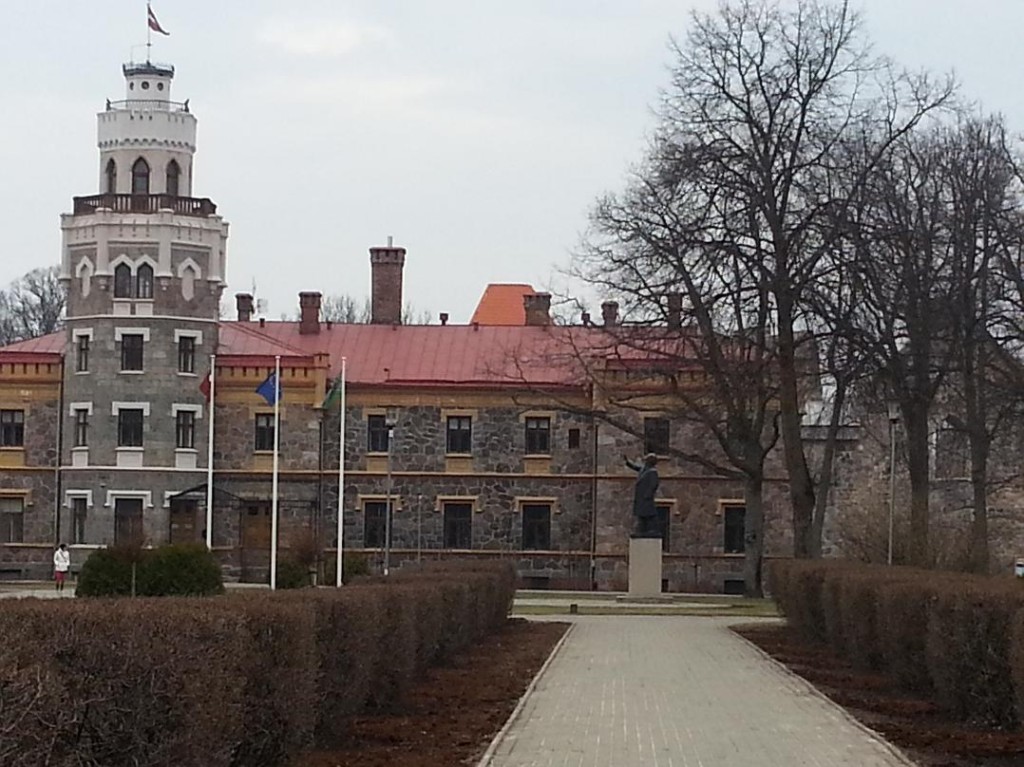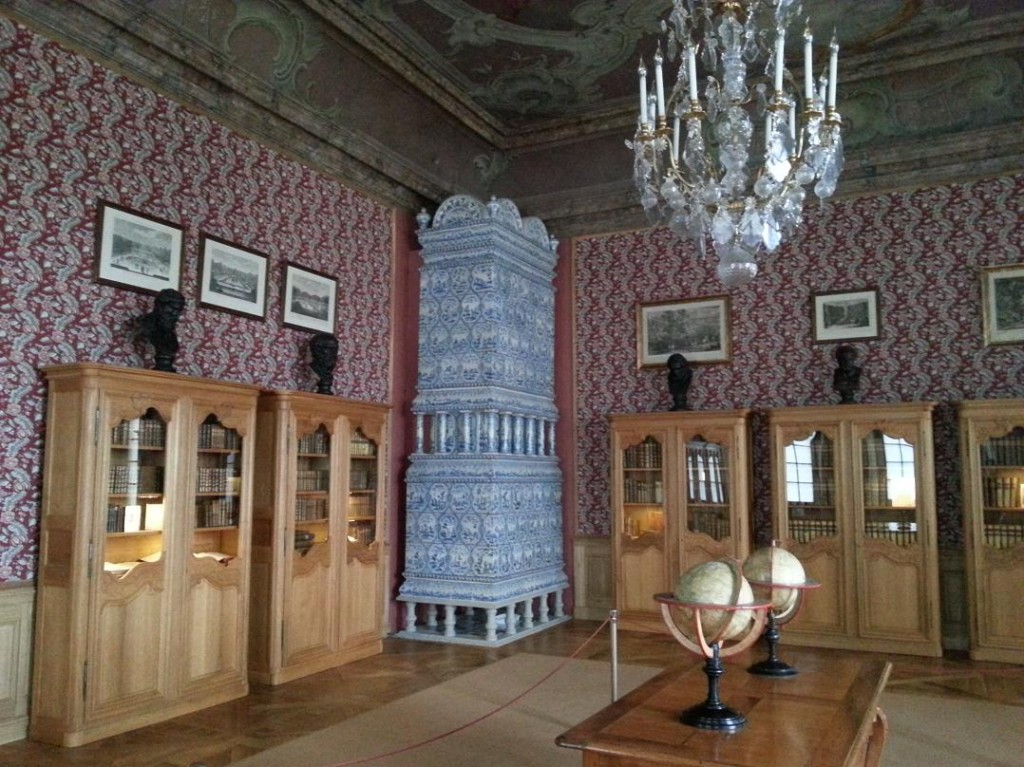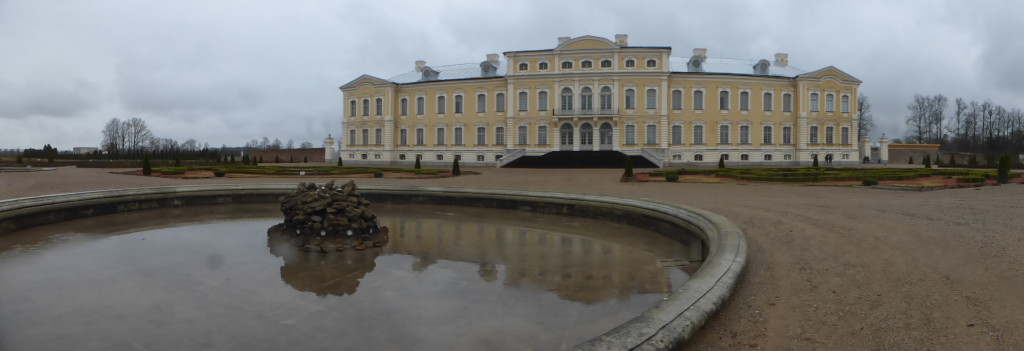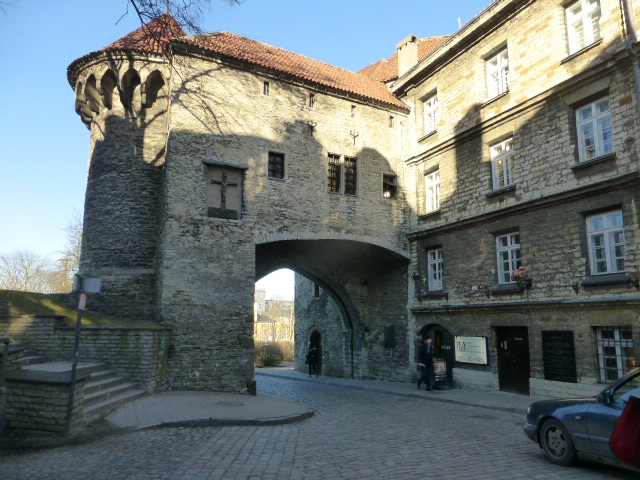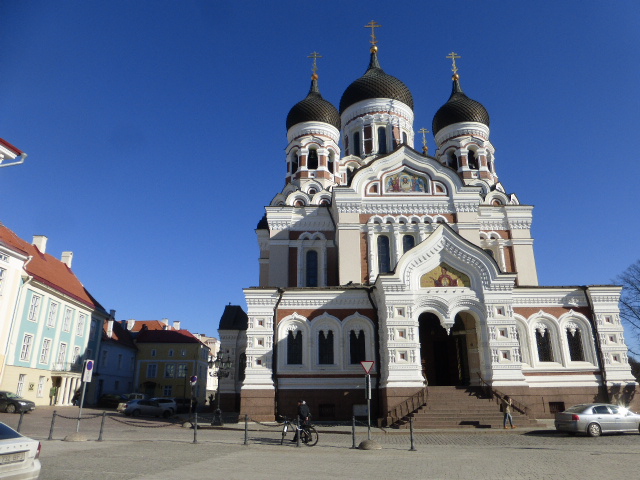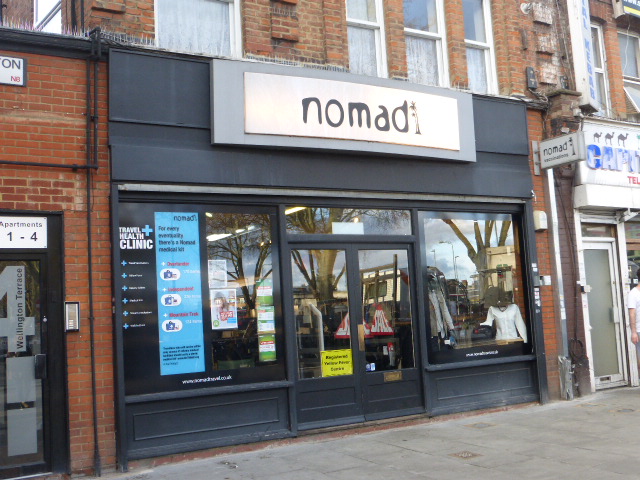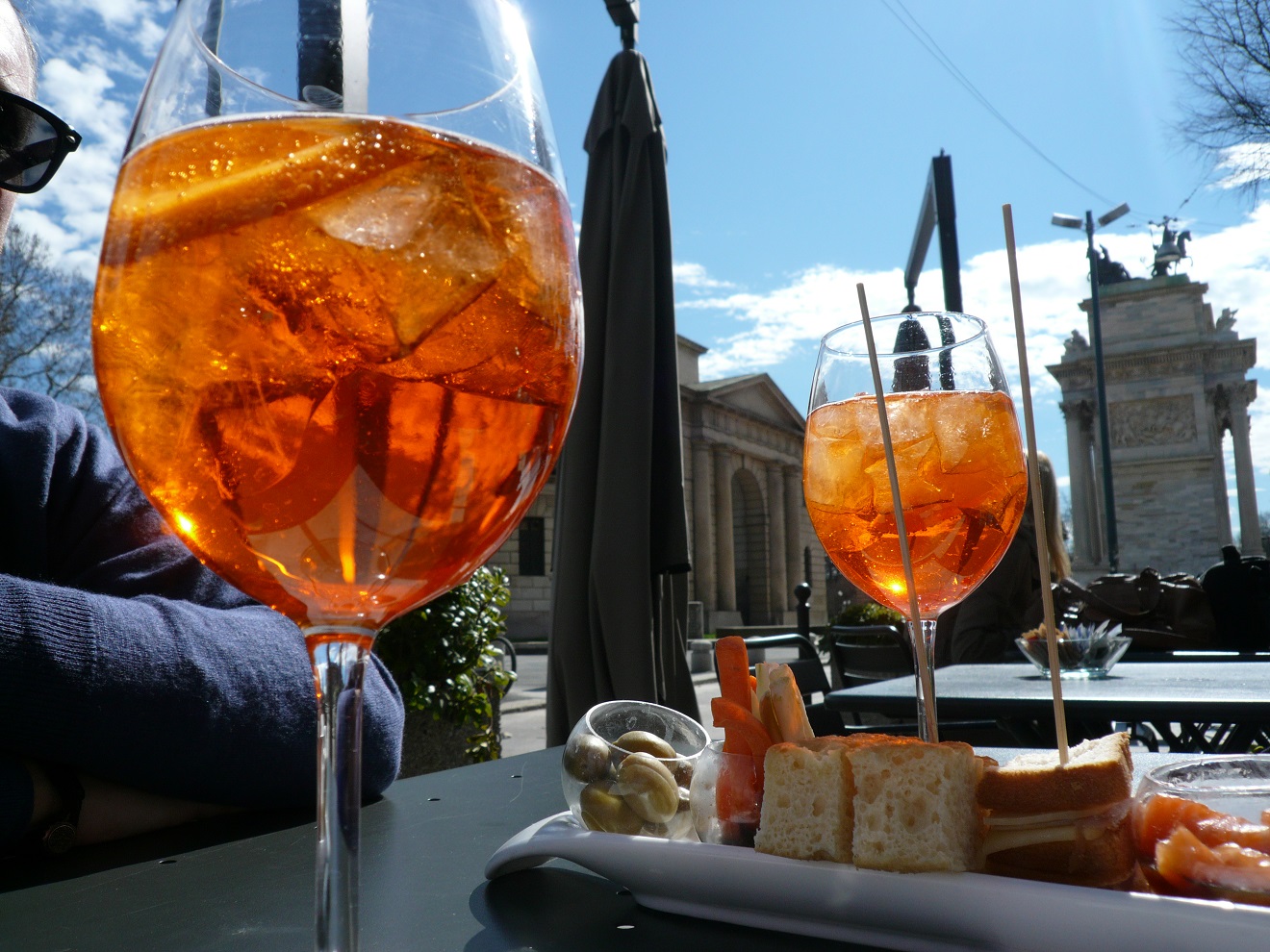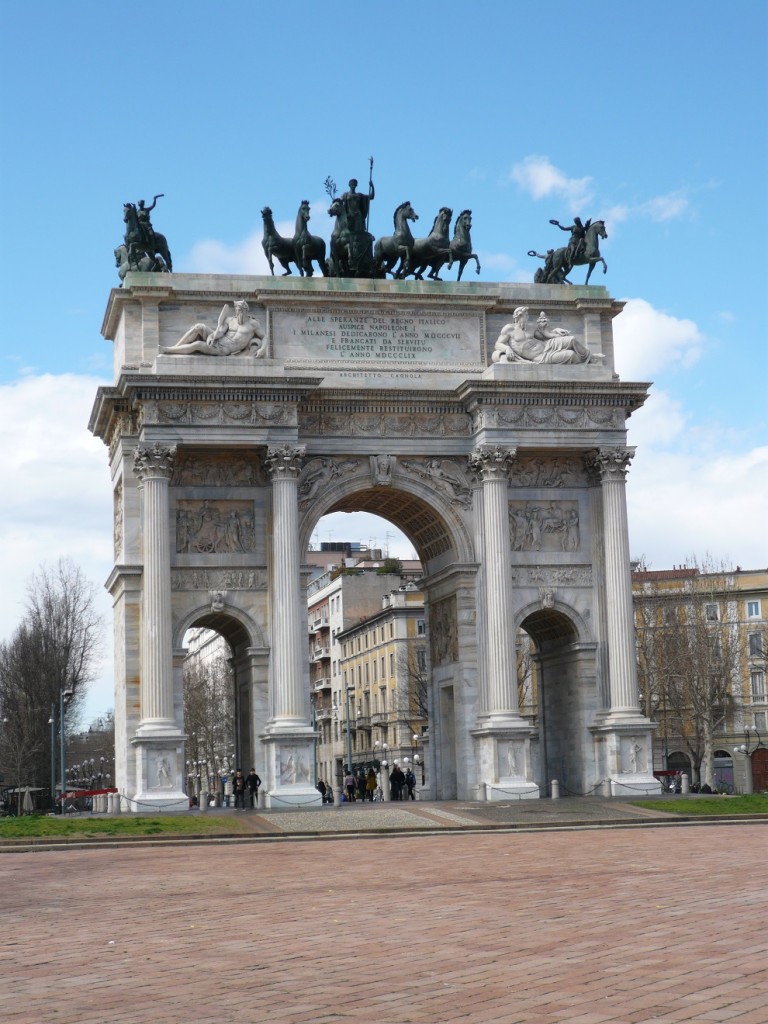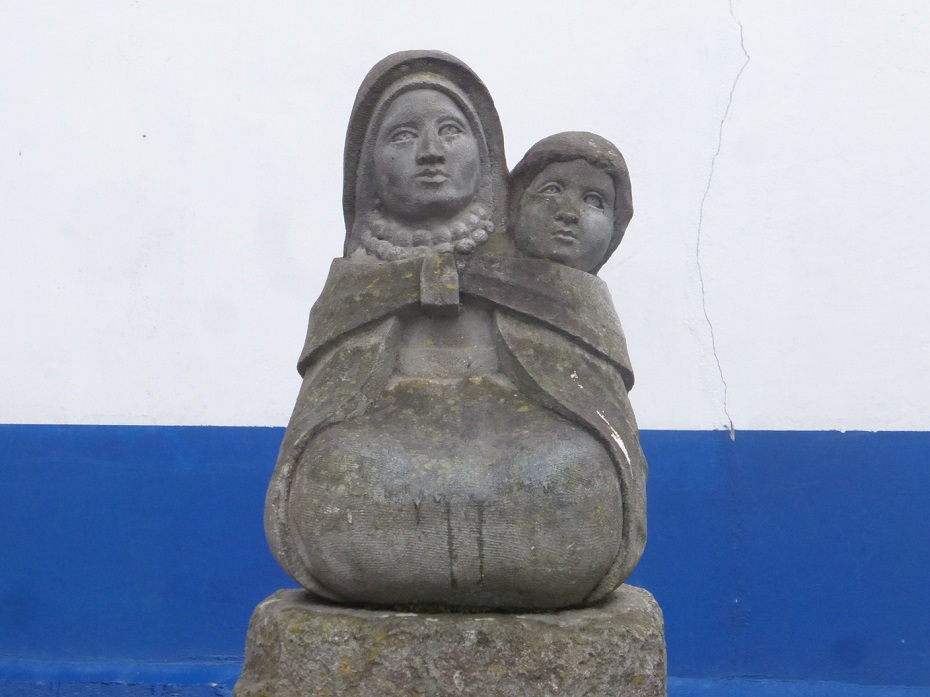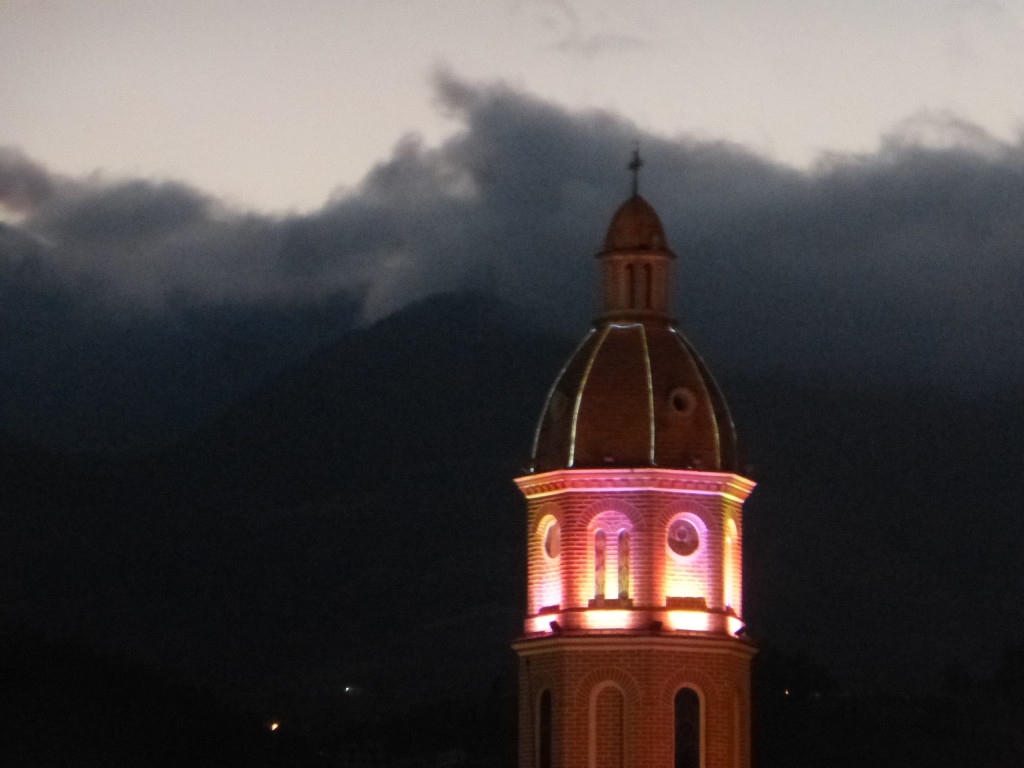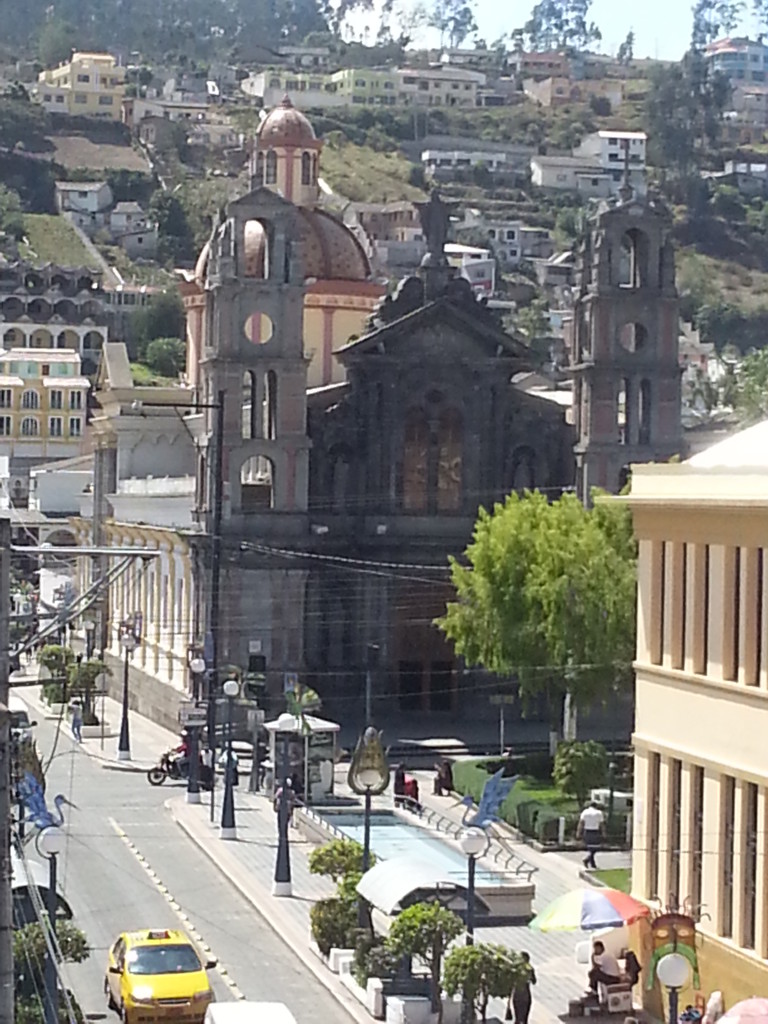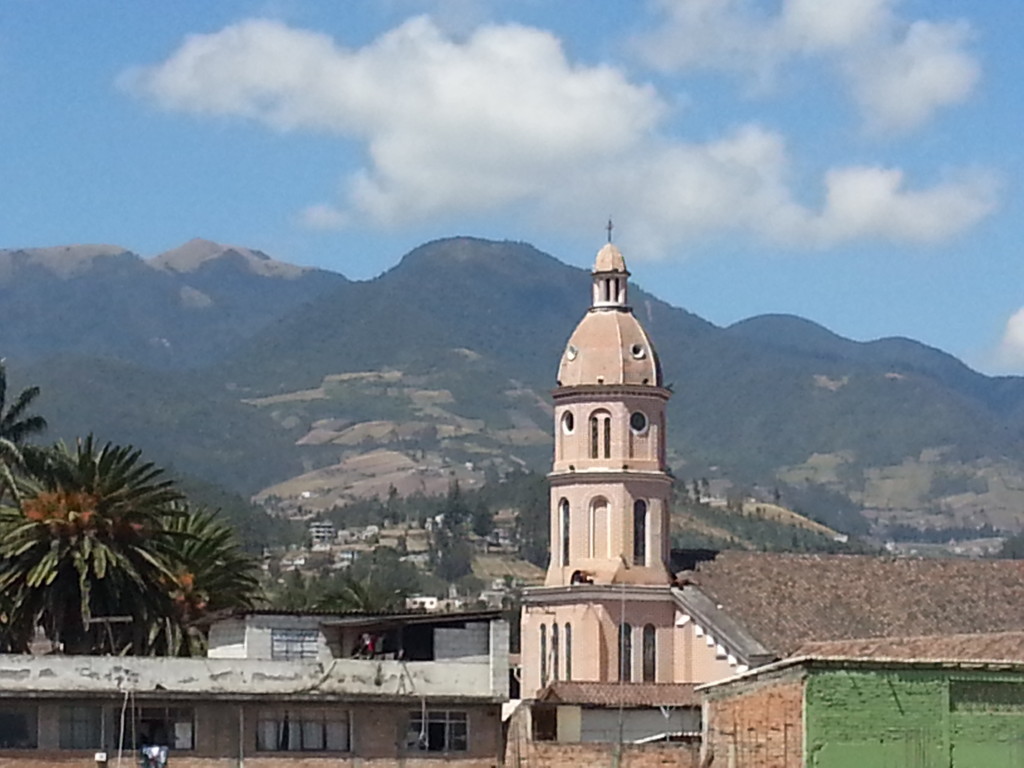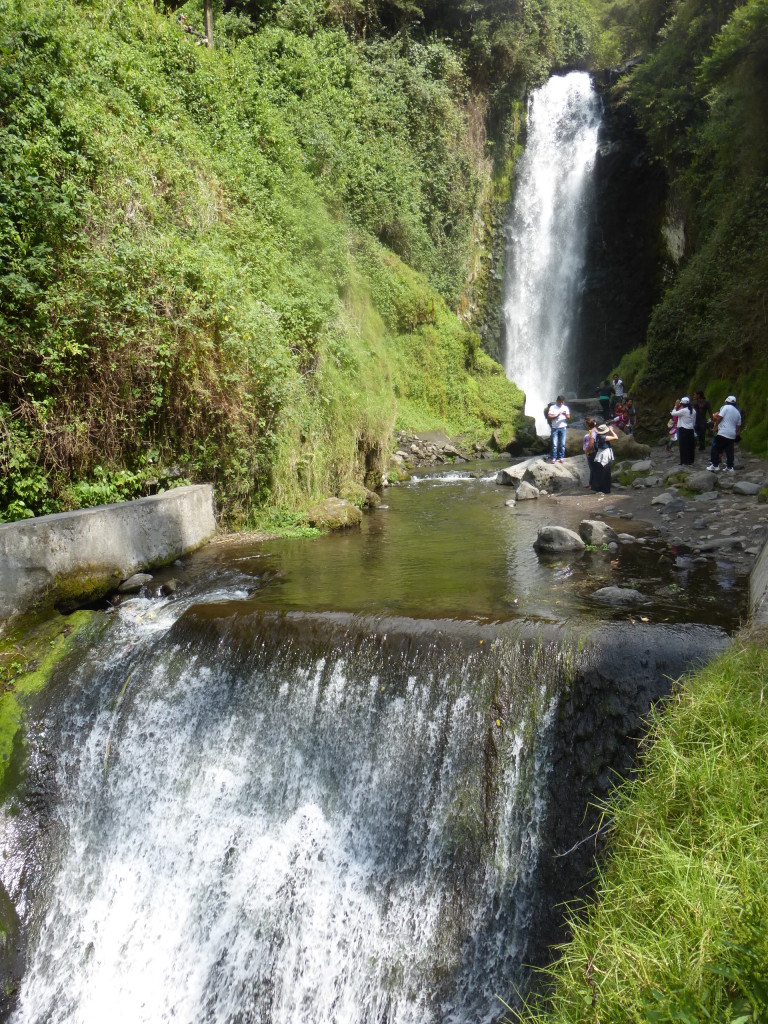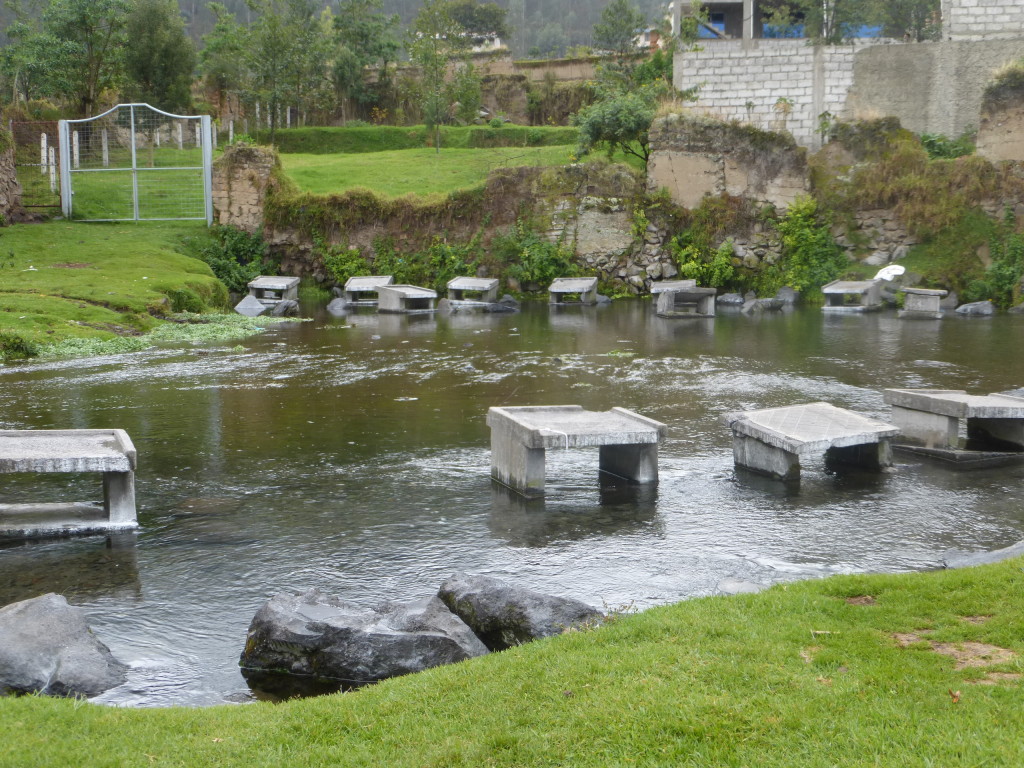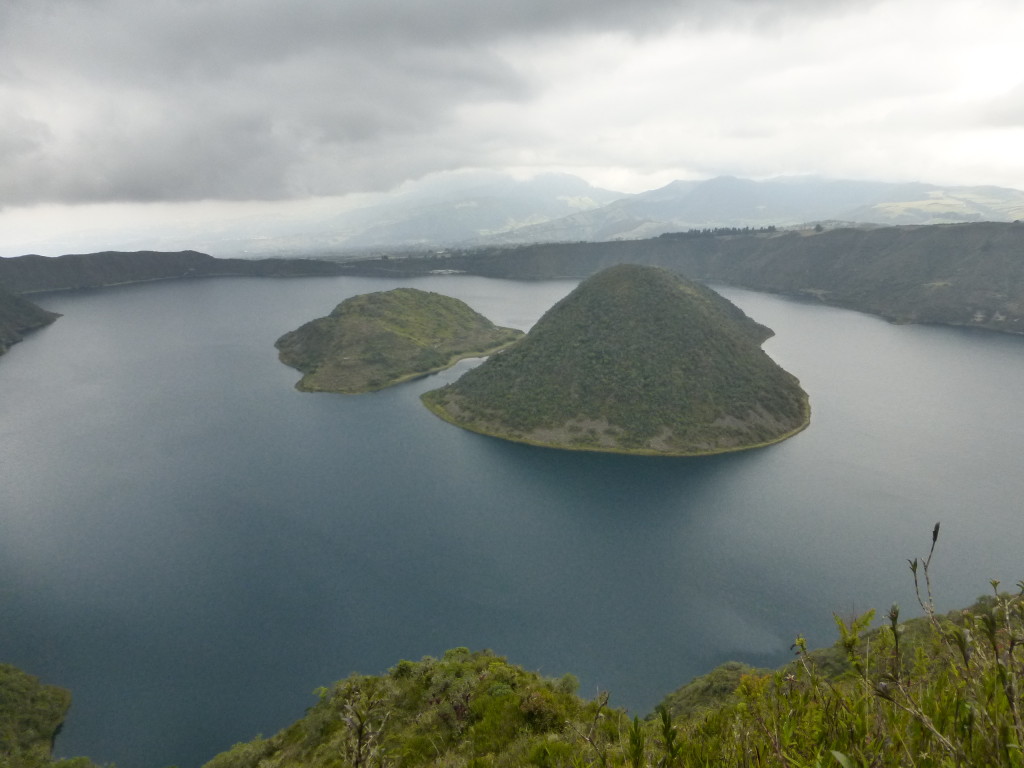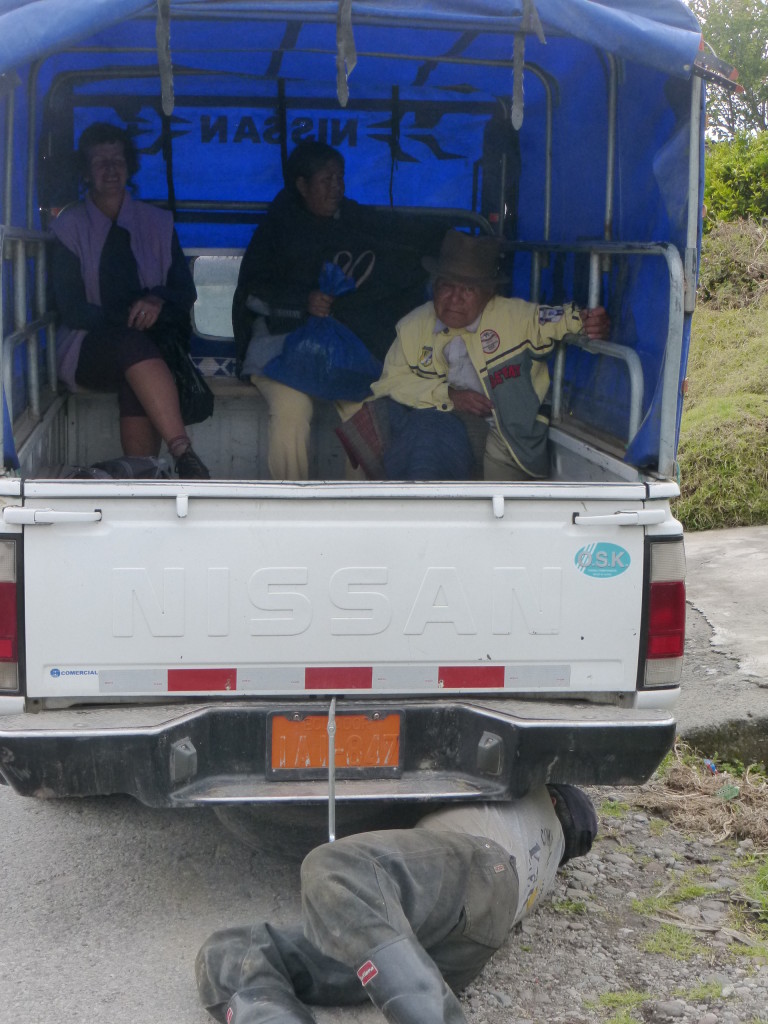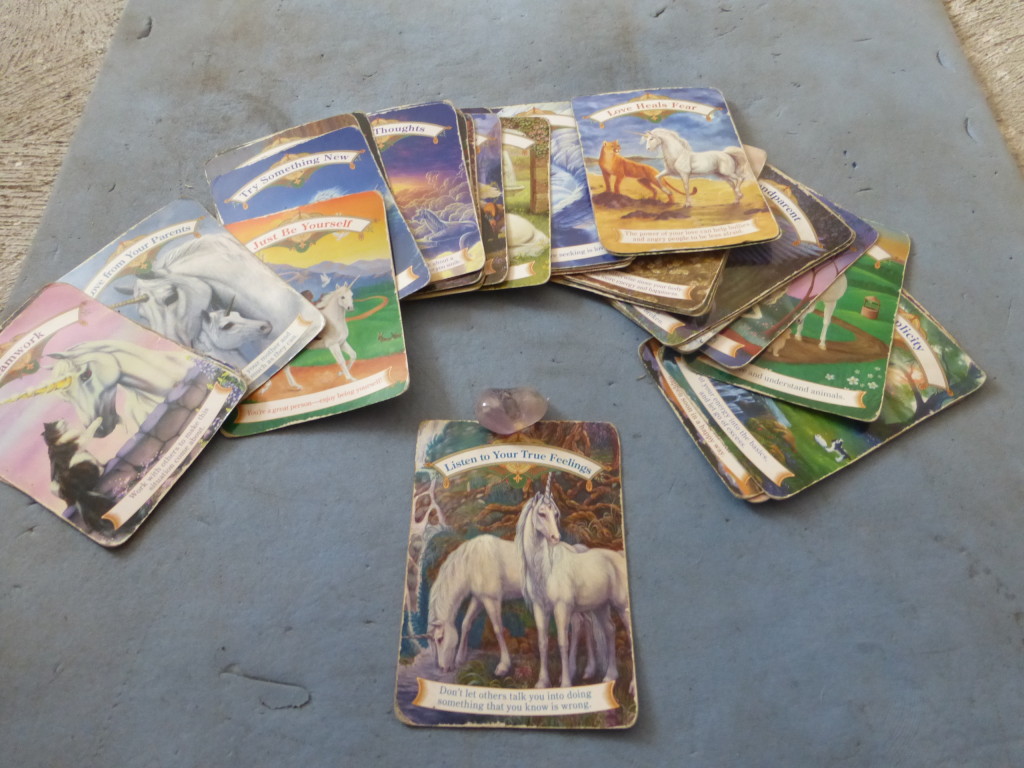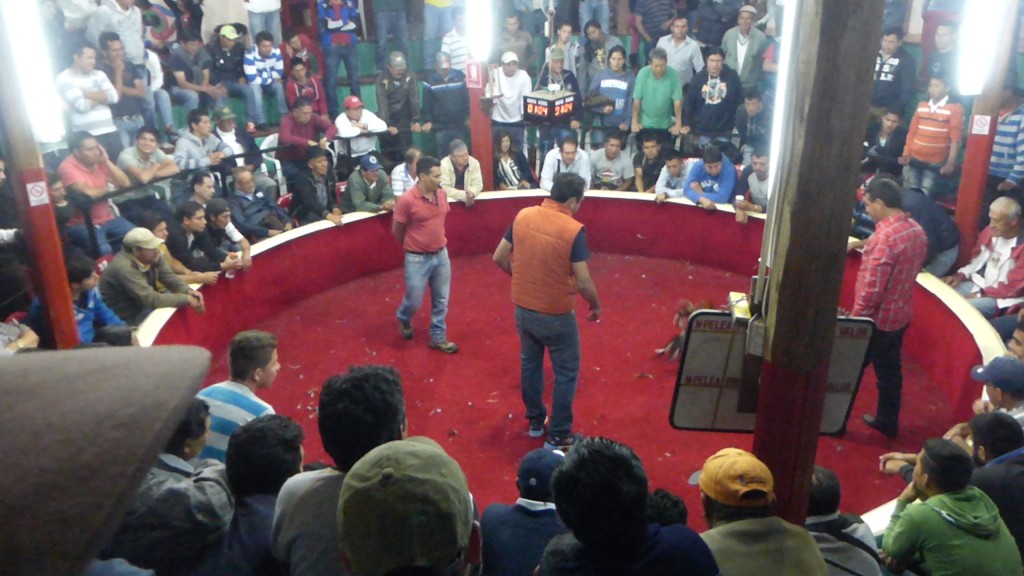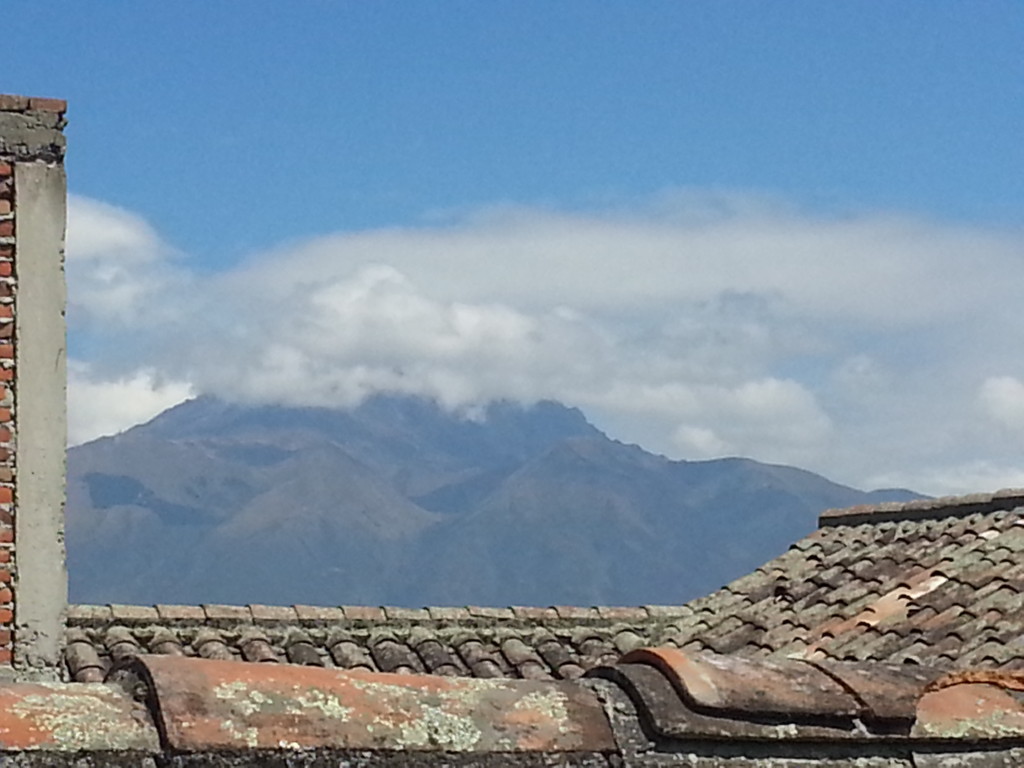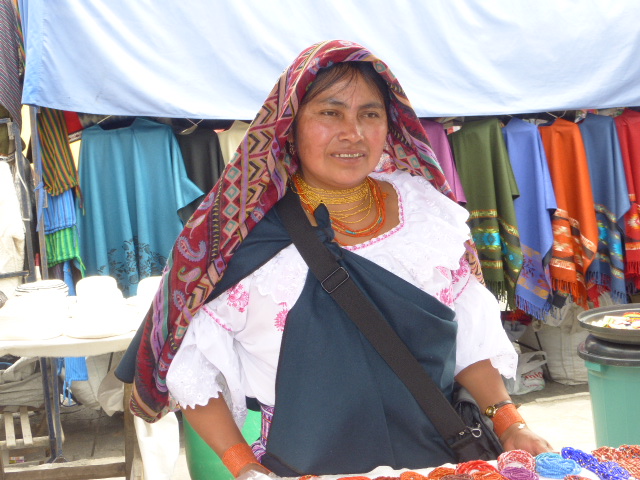
by Jane | Apr 17, 2015 | Destinations, Europe, Latvia |
We drove south across the border into Latvia and immediately things changed. To be fair, the grim, sleety weather didn’t help but the roads became more potholed as our ‘motorway’ hugged the steel grey Baltic Sea which we could see through the white trunks of the silver birch trees. We drove through little villages of wooden houses – blink and you would miss them – and we went straight to the capital of Riga, stopping on the outskirts in a MacBurger place so that we could use their free wifi and track down a hotel for a couple of nights.

crossing into Latvia
S drove MAGNIFICENTLY through the horrible, devious and extremely stressful one way system of Riga whilst I fast approached a meltdown as we went round and round, but we eventually ended up at a small hotel a fifteen minute tram ride from the city centre with some not so dodgy parking in a compound behind it for the van.
After a decent night’s sleep I wanted to do some sightseeing so leaving S in bed I jumped on a trolley bus which ran past the hotel and I went into the old town. First impressions are that the old town of Riga is bigger than the old town of Tallinn, but like Tallinn it is stuffed full of churches with ornate spires, castle towers and turrets and parks. As well as the old stuff (I think it is predominately baroque) there is a large art nouveau element to the architecture and everything is very pretty.

architecture in Riga
I poked around in the Museum of War which is housed in the Powder Tower and also in the National Museum of Latvia which took me a few attempts to track down as there is an unimpressive doorway besides what appears to be a high street bank. The first museum was ok, the second one didn’t have that much information in English so I got a bit bored. For lunch I ate at a small cafe which served traditional Russian dumplings – you choose what type and how many you want from the large pots of boiling water and you then weigh your bowl at the till. I walked some more around the Freedom Monument which was glinting in the sun and the old houses and buildings before taking my aching feet and the trolley bus back to the hotel.

The Powder Tower
Unfortunately the next day S was still not well, so to give him and myself some space I checked out with my backpack and I went and found a hostel right in the thick of the old town. As I checked in I met Nick and Frankie who told me about a free walking tour that they were about to go and investigate so I tagged along with them for what was a tour of Riga that was a little bit different.
The tour concentrated on things that were mainly outside the old town. We went to the huge food market which was made out of old zeppelin hangers and we saw the big squat Soviet designed building that is known as Stalin’s birthday cake. I learnt that beavers live in the river that flows through the city (hence why many of the parks trees are protected with iron fences), and that the mound of old stones which looks positively medieval was not a castle tower but rather a dump for the stones and soil when the ancient town walls were dismantled.

Stalin’s birthday cake
We saw the little wooden houses which still remain outside the old town walls. Most of them look quite ramshackle now, but it is a matter of pride for the residents that they are still there. The ancient town rules were that no stone buildings could be built outside the city walls so that if an advancing army approached, the wooden homes could quickly be burnt to the ground so as not to afford the enemy any advantage. The people got fed up of being displaced time and time again as their homes were burned but when modernisation took place and the government wanted to replace the houses with stone or brick buildings they stubbornly refused to allow their homes to be bulldozed and demolished yet again.
Back at the hostel I met Caitlin, a US citizen who currently lives in Germany with her husband and who loves to travel. After a meal out we decided to team up the following day and visit the Turaida Castle complex at the town of Sigulda. As we set off in damp drizzle I thought that I could remember where the railway station was but after 25 minutes we were still wandering around in the rain. It was hidden inside a shopping mall, although when we arrived back later that evening and exited through the main door we couldn’t believe how we had been unable to find anything so massive!

visiting Turaida castle
But after a train ride and a cramped minibus journey later we got to Turaida castle which is on the edge of the Gauja National Park. It was quite beautiful even in the drizzle and it must be simply spectacular in the summer when everything is green and the red brick towers rise out of the surrounding forest. We happily wandered around the museum and the grounds and then, after getting the minibus back to town we went for a walk to find the Sigulda castles (old and new) – although we succeeded in getting lost yet again.
We think that because we both usually travel solo we relaxed when out with each other and we took no individual responsibility for directions so instead of being aware of our surroundings we chatted away and subsequently continued to get lost. Coming across an Orthodox church in the middle of nowhere we asked a lady who was talking to her friend on the street how to find the castle. We obviously didn’t look too competent at understanding her directions in Latvian so she indicated that she would give us a lift in her car. Not wanted to look a gift horse in the mouth we piled in the back and she kindly drove us to our second castle of the day.

Sigulda new castle (the old one is tucked behind)
The next day we set out via two buses to Rundale Palace. Imagine Versailles near Paris and this was something like that, just on a much smaller scale. There were 40 or so rooms open to the public that had been renovated and decorated and which were quite beautiful. I have been in many manor houses and castles but I have never seen anything like the heating systems which are employed in this part of the world. In a corner of each room was a large ceramic tiled ‘box’. A furnace behind would burn wood and service 3 or 4 rooms via this forerunner of a modern day radiator as opposed to the large open fires which would burn logs or coal in houses and castles in the UK.

the old ceramic tiled ‘radiator’
The palace gardens were newly planted up and all ready for spring and very bare but we saw pictures of them when everything is blooming. I would love to retrace my whole journey in the summer months when everything must have quite a different feel with flowers and green grass and blue lakes.

Rundale Palace
Returning to the nearby town of Bausca we jumped off our bus and we went to visit yet another castle. Disappointingly not very much of this building was open during the winter but it was still good to wander around. Despite the fact that there were hardly any other tourists there were plenty of staff dotted about between the various rooms. They were hilariously quick to try to shepherd us through and back out, frantically gesturing that we should pass through doorways or go up stairs, and they got themselves into a real tizzy if we decided to double back on ourselves.

Bausca castle
You will be pleased to know that we didn’t disappoint after leaving the castle and this time we actually managed to mislay the entire town centre and the bus station (yes I know that nobody we asked spoke English but bus usually translates into any language). We finally found a bus trundling along the street which we jumped aboard and luckily it took us back to Riga.
We went out for a lovely meal that evening in a typical little Latvian restaurant where as well as a very tasty meal we sampled several shots, including a cranberry liqueur and the brain-blasting Riga Black Balsam. Caitlin had an early bus the next morning and she wanted an early night, but she reappeared in the hostel kitchen at about 11.30pm – dragged there by a matriarchal Russian lady who had just checked in to her dorm with her husband and child.

shot samples
Newly arrived from Paris and hungry, this lady was not going to leave Caitlin sleep and she ordered her to get out of her bed and to join them in the kitchen for cake and yogurt. I was working on my laptop but I got roped in too; the whole time the pair of us were talked at loudly by this domineering but kindly lady. Caitlin escaped and went to bed and then later it was my turn to be woken by an extremely loud drunken New Zealander who was attempting to clamber into his top bunk above me. Threatening him with sudden death if he dared to vomit on me in the night he then chose to climb back down and hold a conversation with me at the top of his voice for the next half an hour. Sleeping in dorms is certainly not for the faint hearted!
On my final day in Riga I went to buy a second hand netbook as mine was playing up again. Guided by the staff at the hostel I found Second-hand-electronic-street and in one of the little shops I found a cheap netbook. Getting it back to the hostel I was relieved to find that Anna on reception spoke both Latvian and Russian and could re-organise it for me (although it does still lapse out of English). The computer had very obviously been acquired by the shop by illicit means – the owner was still logged onto his Facebook page – but there was no way I was going back to confront or accuse the two hard faced looking men in the shop who had sold it to me of stealing it.

second-hand-electronic-street
I sat and chatted for ages in the hostel with Anna who spoke frankly about politics and I learned a lot about the ethic makeup of the population of Latvia. I also learned how despite being born in Lativa she is often made to feel that she doesn’t totally belong because Russian not Lativan is her mother tongue and she is sometimes viewed with suspicion or non-Latvian by others based on her ethnic heritage.
I have to confess to being pretty ignorant about the history of the Baltic countries prior to this trip. I clearly remember the recent events at the beginning of the 1990’s when they each won their independence from the USSR but I was totally in the dark about the horrors and the occupations that they had all suffered throughout history. They saw some of the worse atrocities during the Second World War when a massive percentage of their population were either killed, conscripted into one foreign army or another or later deported to Siberia. They were denied their religion and their language and while each country has a very clear identity and a pride in their independence and history, people will simply shrug if you mention the possibility of any future conflict, as is currently being mentioned in the press. They have seen it all before. They are resilient.

The Freedom Monument

by Jane | Mar 24, 2015 | Europe, My travels |
My next adventure is underway. The starting point is Helsinki – the end point…who knows!
And from the very beginning it appeared that things were going to be a bit challenging.
Drama #1 occured as soon as I arrived at the airport. I was met by my fellow traveller who handed me the keys to his large (left-hand drive) transit van and he announced that, due to certain circumstances I had to drive.
Out of Helsinki during the rush hour. Along the motorway which was being dug up and like a slalom course. And directly into the low setting sun and with the sand which had been laid on the icy roads during the winter whipped up into a swirling sandstorm.
The only thing that I can say about that white knuckle ride was that the sky ahead of us resembled nothing that I had seen before – it was pure molten gold and more beautiful than any sky that I had ever seen.
I had been in Finland during winter once before when I had visited Tampere – you can read about that experience here

The frozen fjord at Espoo, Finland
But we survived the journey and the next day we spent a half a day walking around Helsinki which is an OK sort of a city, but it is very spread out. The highlights are the Uspenski Cathedral with its red brick and green onion dome roofs and the fantastic-from-the-outside-but-plain-inside white Cathedral.

Helsinki Cathedral
Drama #2 began after we had booked a night in an apart-hotel in the dormitory town of Espoo over the internet. The hotel had no receptionist present at any time. When you are sitting in your vehicle and you have very intermittent internet access and no Finnish SIM card and you have paid for the night over the internet but cannot open the email which contains details of your room and the key code, you cannot even begin to express your frustration. But eventually we sorted that problem out and got into the hotel.
On day 3 we were back in the van for another white knuckle ride back into Helsinki for the ferry port. Dodging the trams I was quite proud that I only managed to jump one red light – I didn’t notice the junction let alone the traffic lights – but I was just relieved to reach the terminal in one piece.
And then there was drama #3. Two very large border guards were cruising around the queue of cars when they pulled up alongside us and studied us intently. We KNEW that they would be interested in us and then they were asking for our papers. While everything was in order things were not straightforward (but not my story to tell at this stage here) and then I was being asked to blow into a breathalyser and I had the cells from my tongue scraped for a roadside drug test.
When everything came back negative (alcohol, marihuana, opiates and amphetamines) the border guards lost interest in us, allowed me to take a photo of the drug test and decided that they didn’t need to pull everything out of the van. And so I drove us onto the MS Finlandia for the 2.5 hour trip across the Gulf of Bothnia to Estonia.

Beach huts on one of the islands as we leave Finland
Estonia
If driving in Helsinki was nerve wracking I almost had a complete meltdown in Tallinn. Driving off the ferry I was horrified to discover that here there were trolley buses, which instilled fear into me as unlike trams they were perfectly capable of veering off their tracks and EVERYBODY was driving at twice the speed limit (at least) and they are, I think, probably the second most aggressive, fast drivers in the world – after those in Bahrain.
We tracked down our hotel for the night which was in an old stone building that was once a sauna complex for the town, and from which we could see the large castle which dominates Tallinn.

Part of the castle at Tallinn, Estonia
On Sunday morning we set off on foot to explore, wandering around the little winding streets although it was next to impossible to get lost as the tall spires of the various churches which rose above the walled city acted as good orientation points. Tallinn has an incredibly well preserved wall surrounding much of it and little streets which are a charming mix of the traditional wooden houses and the modern. The old town square was picture postcard perfect in the warm winter sun and we were lucky enough to bag a table outside one of the little bars and rest for a while.

The town hall in the Old Town Square, Tallinn, Estonia
We visited the Orthodox cathedral which is up near the castle complex. The inside was atmospheric with the smokey haze and scent from the candles and the incense rising high up into the onion dome. Pillars were painted with flowers and swirls and there was constant movement as people flowed between the various icons and altars, many stooping to touch the floor and some even kneeling to kiss the floor in front of some of the relics.

The Orthodox Cathedral, Tallinn, Estonia
I had really enjoyed learning Spanish when I was travelling in South America and now on this trip I want to learn a musical instrument. Many travellers have guitars or drums but as I desperately need to reduce the weight that I carry, I opted for the harmonica. Back at the hotel that evening S, my fellow traveller who can play many instruments very well gave me my first harmonica lesson. I thought that it went rather well, and rather easier to learn that Spanish but some of the other hotel guests may argue otherwise.
The following day I went out alone to explore Tallinn. I found the ‘Knit Market’ where rows of stalls are set into arches underneath the town walls and ladies sit knitting and selling their woollen socks and jumpers. I found the ‘Cat Well’ where in the olden times people would throw the stray cats (dead and often alive) as a sacrifice to ensure that the water to the town wouldn’t run dry – never mind about the risk to the public health from the decomposing bodies.
And I saw St Olaf’s Church with its slender spire and which was once the tallest building in the world, although it and all of the other museums were closed, either because it was Monday or the ‘wintry season’ or both so I was unable to climb the tower and look out over the red roofs of Tallinn.

Castle and town walls in Tallinn, Estonia
I was stood in the street studying a map when two young men approached me and asked if I needed any help. Forty five minutes later we were still chatting by the side of the road. Andri, smart as a pin in his blue suit and Gunner a teacher, both spoke excellent English and had a cracking repartee of anecdotes and observations on life. They were hilarious and I was sorry to have to move on and to say goodbye to them. And a little later in the day they emailed me to tell me that just after we had separated they had been fined for jay-walking!

Andri and Gunner
Estonia, like many places that I visit, has surprised me. I try to travel without any pre-conceptions and always with an open mind, but you can’t help but absorb information which the media decide should shape your view of the world. I have always thought that it is so important to watch the news and to be aware of what is going on in the world, but as I travel, I am more and more disillusioned, not by the news itself, but by the spin which is placed on the stories and which distances us from other people, countries and cultures.
Estonia is spotlessly clean – from the streets without litter to the clarity of the air. For all of my first week I was blessed with brilliant blue, cloudless skies, crisp cold mornings at freezing point, but with temperatures rising rapidly in the sun during the daytime. Most people can speak many languages – English, Russian, Finnish and Swedish seemed to predominate and they are friendly and keen to chat.

The cat well
I love to travel and to see things. Old buildings, modern towns, forests or beaches are all fantastic but for me, it is the connection with people who make my travel so special. Andri and Gunner were a chance meeting by the side of the road but they made my day in Tallinn, so for this journey as I travel down through the Baltic States I intend to delve a little bit deeper into the lives of the people that I meet and bring you some of their stories.
I hope that you will follow me and accompany me on my adventures as I head south.
by Jane | Mar 10, 2015 | My travels |
A partnership with Nomad Travel and my next trip
I have some very exciting news.
I am working in partnership with Nomad Travel who have given me a travelpack and a shoulder bag to trial. I am really excited to be working with this company as they do so much more than sell equipment.
Later this week I will fly to Helsinki to begin my next adventure which is a road trip south, first travelling through Estonia.
Follow the link below to find out more
Click and follow this link to read more

Nomad Travel, Turnpike Lane, London

by Jane | Feb 24, 2015 | Uncategorized |
Click here to read about my Top Things to do in Milan
I visited Milan during the month of February. Every sort of weather was thrown at us but that certainly didn’t dampen my enjoyment of a very chic, cosmopolitan city.
I believe that the best way to explore any city is to arm yourself with a map and just get out there and wander up and down its streets and alleyways, but this guide will give you an idea of those things that I am glad to have discovered in Milan
Top Things to do in Milan


by Jane | Feb 3, 2015 | Ecuador |
I survived my pickpocketing at the border but one hundred dollars lighter and I jumped on a bus to Otovalo. I had been here before but I wanted to break my journey and this town warranted a better look around.

Otavalo
In the end I stayed here for ten days in two different hostels so I really got a feel for the place and its residents, bouncing in and out of Quito in between. Since my first visit to Otovalo there had been an earthquake and the road through the mountain is currently closed. It now takes twice as long to get to the town from Quito on a very long winding route which has had a severe impact on the number of tourists who pop up from the capital for the day.

Otavalo, Ecuador
Bt it is worth making the effort and it is worth staying longer. Otavalo has got, of course the crafty, artisan market – the biggest and arguably the best in Ecuador and it also has a weekly animal market. There are TWO volcanos looming over the town and some beautiful towns and villages within striking distance. It has lakes, mountains and a scenic railway line passes quite close by.
I spent some quality downtime here writing and walking in the countryside and I also I met a British lady who had repatriated herself to the town and we went out together on a couple of day trips.

the mountains of Otavalo, Ecuador
We visited the nearby waterfalls at the Cascada de Peguche which are considered a sacred site by the local indigenous people and who hold ceremonies under and near them.

Cascada de Pegucha
We visited the large lagoon, the Lago San Pablo on a very still, foggy day, a day when dampness hung in the air and deadened all sounds and sucked the life and colour out of the landscape. We saw the little pond formed where the stream tumbled down from the mountains and where the ancient stone washing stones stood. The indigenous ladies still gather here in this pool to wash their clothes, pummelling them on the rocks, and chattering and passing the time of day while they sit or stand in the water.

washing machines
Another day we trekked for five and a half hours the fourteen kilometres around the rim of the Laguna de Cuicocha with its two forested humps of islands hunched in the middle and is so named for the guinea pigs that the islands are supposed to resemble. That trek was actually quite tough as in some places where the path climbed very high above the crater, and the gradient rising from 3100 to 3400 metres but it was very beautiful. The path wound in and out of trees and each time it took us back out above the lake our viewpoint had shifted and we had a different perspective. The lake changed from a moody, glassy black which reflected the mountains to molten mercurial silver and all shades of blue/green in between.

Laguna de Cuicocha
We had rain, sun and hail thrown at us while we walked and then when we finally reached the road we had to hitchhike back to the town as there was no public transport. That in itself was an adventure as we climbed into the back of a truck who had already picked up a lady and a drunk guy who kept retching in the corner – and thenthe truck got a puncture too.

waiting patiently for the puncture to be repaired
Julie the British lady that I had met was a masseuse and did something with crystals. I had a lovely massage and she read my cards (something like tarots) with uncanny accuracy but the jury is still out on the crystal stuff. I supposedly had all my bad energy taken away from me, but following subsequent events she would probably dispute that!

The cards. Uncannily accurate
On one of my return trips to Otavalo (by now my third visit) I was accompanied by the uber intelligent Marcel from Germany who I had met in Quito. My trip has been educational in more ways than one but before I set out I never expected that I would learn about black holes, quantum physics and tons of other sciency stuff. And all credit to Marcel that despite my blank looks he didn’t tell me that I was completely stupid and he did explain a lot of stuff in a way that even my non-scientific mind could grasp (I gave up on physics in school on the day that we made patterns with a magnet and iron filings. What use was that ever going to be in my life?)
One evening we heard that there was a cockfight going on. This is legal in Ecuador and most towns have an arena. We debated the ethics of going and then decided that, provided we didn’t have to pay an entrance fee, we might at least pop our heads in and see what was going on.

A cock fight – with birds strategically placed behind a post
It wasn’t as bad as I had thought – I actually found it more interesting watching the crowd watching the fighting than the birds themselves. It was similar to a boxing match in as much as there were timed segments, the referree would frequently pause the match and there was some big money changing hands among the crowd.
We stayed for just twenty minutes which was quite enough, and I would not go again but just after we had left we were told that there had been an immediate kill which had earned the owner of the bird a huge two thousand dollars.

waiting for the cock fight
I have to ‘fess up to not being particularily politically correct in several respects because I also visited the animal market twice as well as the cock fight. And they were both very un-pc. But interesting. And quite legal and normal in Colombia. In the market there were all sorts of animals changing hands, from tiny little chicks and puppies to pigs, goats and bulls. Some very grand cockerels were on display which we later learnt were being sold for cock fighting and a man was very strangely leading a randy bull around on a rope.

patiently waiting for a sale
Daniel from Cuenca had joined us in Otavalo by now and the three of us spent a hilarious half hour watching the bull unsucessfully attempt to mount the other bulls that were tied up to the fence but he only succeeded in spraying everything and anybody who was stood too close with sperm. Very prurile and childish but ever so funny. Daniel actualy recorded the whole thing if you are interested!

calendar shot – October
Daniel had joined us in Cuenca for a music festival which I had been reliably informed by Julie the Brit would take place at the sacred waterfall and which would be a moving,s spiritual affair. Was it heck!
It was not at the waterfall at all, but in a large, drafty sports hall. A bevvy of bands took their turn on stage but none of the music was spiritual – it was all a jazzed up version of the music that you can hear on many high streets. Pan pipes accompanied by drums and guitars didn’t really do it for us since we were expecting such big things. I have to say that it was a dreadful night – not least because a man who was sat next to me shoved his tongue in my ear and told me that he loved me (I moved pretty sharpish). Marcel thought that the whole visit to Otavalo was hilariously funny and Daniel couldn’t wait to leave Ecuador (I should point at that neither were the owner of the out of control tongue)

volcano hidden in the clouds
One nice thing about Otavalo was that I also had the chance to meet up with Ashley from the States who I had previously met in Banos. I was told before I started to travel that there was a well worn path that travellers followed but I never believed that I would re-meet the same people again. After all, the distances are so huge, but people swap Facebook addresses and hook up again. If somebody can recommend a hostel or a good place to visit that can sometimes be safer than winging it (not always as some of the best things that I have seen or done have been when I have got lost)
Since my return to the UK after my trip I have even met up with fellow travellers here too and that is fantastic because you have the connection and the shared memories.

a lady in Otavalo market
Leaving Otavalo behind on November 2nd Marcel and I in our bus drove past the cemetary where the indigenous population bury their dead. It was packed. The roads around it were solid with people and families laden down with baskets and flowers because it was ‘The Day of the Dead’ which is celebrated all around Central and South America and Mexico. It is a day of celebration rather than sadness when whole (usually indigenous) families decamp to the graves of their ancestors and hold a picnic alonsgside their resting place, complete with their deceased relatives favourite foods.
Arriving back in Quito we also witnessed the way that some of the city folk commemorated the Day of the Dead. Enter your email address and follow me to ensure that you don’t miss my my next installment or like me on Facebook or follow me on Twitter
